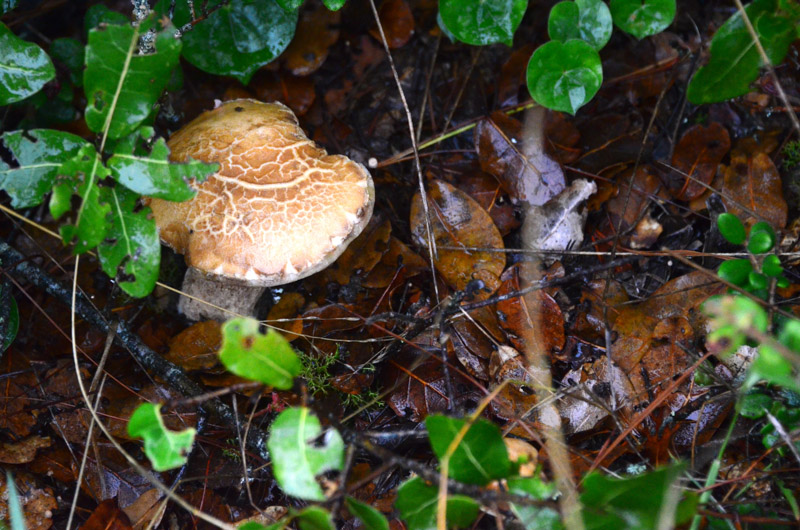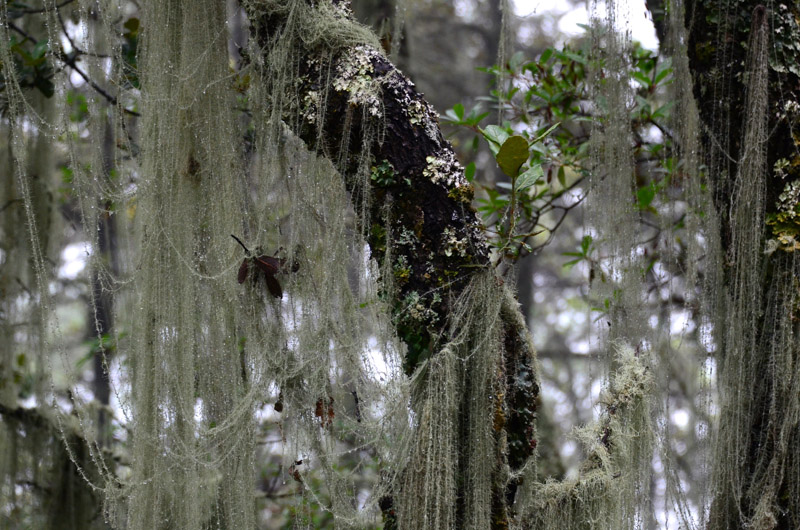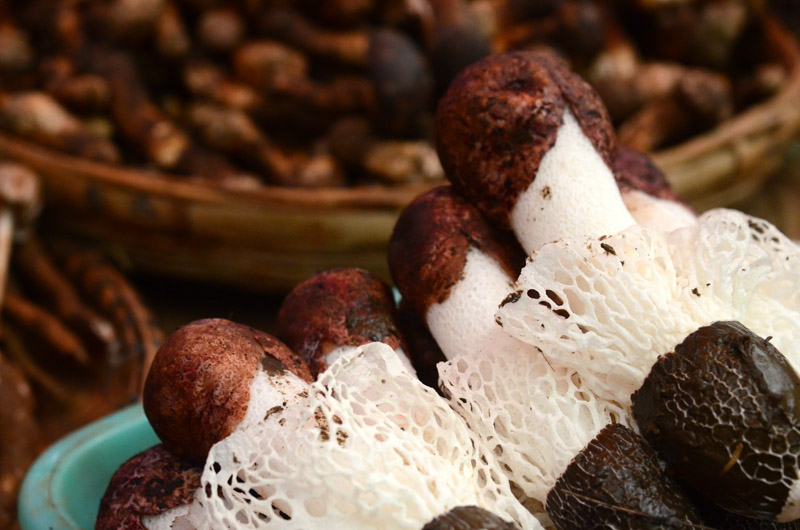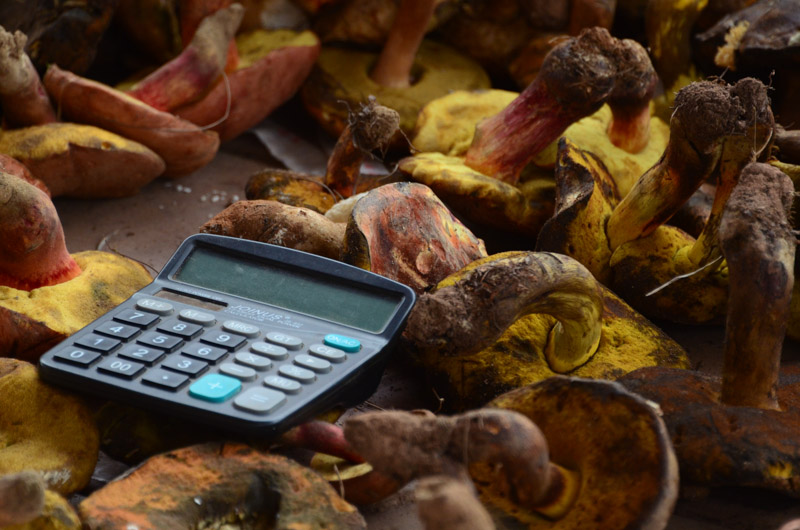Buried beneath the leaf litter of Yunnan’s ancient forests lies hidden treasure prized by the world’s gourmands. Joanna James explores the region’s fabulous fungi…
On one of my first trips to Yunnan, a friend in Kunming took me out for hotpot near the city’s Green Lake. Once the broth started to bubble, our mouths started to water and the waitstaff began to load our table with raw food to cook in the hotpot. When the first few plates were filled with mushrooms, I thought nothing of it. But the mushrooms kept coming – plate after plate of muted colours, unusual textures and different sizes – until our table was filled with different kinds of mushrooms, and not a single button mushroom in sight. This was my introduction to Yunnan’s fabulous fungi.
Long-time readers may recall that we have previously written about Yunnan’s amazing biodiversity, as well as the province’s delicious (and much underrated) cuisine. These two topics share one common star – mushrooms.
There are around 3,000 known species of mushroom worldwide. 938 of these species have been found in China. 800 species can be found in Yunnan – that is to say a staggering 28% of all known species of mushroom can be found in a single Chinese province.
In scientific terms, Yunnan is a biogeographical convergence zone: tropical, temperate and alpine climates can be found in close proximity, all washed with the summer monsoon rains that sweep across the region. Mild temperatures, plenty of precipitation and fresh mountain air combine and create the ideal conditions for many different types of mushrooms to thrive.
Ganba (乾巴菌) is found only in sandy soils beneath Yunnan’s pine trees. Matsutake (松茸) grow under oak and pine trees above 2000m elevation. Spectacular-looking bamboo mushrooms (竹芛菌, shown below) grow in tropical bamboo forests. Jicong or termite mushrooms (雞樅菌) grow only on termite mounds, where they help the termites to convert woody lignin fibres into more digestible sugars for the termites. Each of these mushrooms can only be found in the wild, where they have evolved to occupy unique niches in each ecosystem.
While all of the above are edible – and much sought-after for their flavour and health benefits – many species are not. In Europe and North America, foragers can take their fungi finds to inspection centres, where experts will weed out any poisonous specimens. In the absence of any such centres in China, would-be mushroomers must work with professional mushroom-hunters to ensure that their picks are delicious rather than deadly.
Angie Koong, who designed our own mushroom-hunting journey, says “People in rural Yunnan can make three-quarters of their annual income from wild mushrooms, so their livelihood depends on their being able to identify the right varieties – nobody will buy from them if they make even a single mistake.”
It helps that professional foragers specialise in particular species of wild mushrooms. In Shaxi, collectors hunt for the several varieties of porcini – yellow, white, black – available locally. Farther north in Benzilan, an ethnic Tibetan village outside Shangri-La, villagers search out matsutake in old-growth forests that cover the surrounding hillsides.
Fresh wild mushrooms have a short shelf-life, and must be consumed within 1-4 days of picking. To get these delicacies from forest to plate before they spoil requires a formidable supply chain. Foragers will go mushrooming each morning, then return home to sort and sell their finds early each afternoon. Dealers will ship the mushrooms on to one of Yunnan’s specialist mushroom markets, often the huge wholesale market at Nanhua, outside Kunming, where 200 tons of wild mushrooms are traded each day in season. Most will be dried, while a few will be rushed to restaurants, often in Kunming, making the provincial capital one of the best places to try Yunnan’s mushroom bounty.
During the summer mushroom season, wild mushrooms appear on menus across Kunming. Different cooking methods are used for each species – rather more sophisticated than my first hotpot experience – jicong are often stir-fried with wind-cured ham, while xiakuai or “summer truffles” are shaved raw over egg and rice dishes to preserve their delicate flavour. On our mushroom-hunting journey, we focus on a different mushroom each day, and each dish has been chosen especially to bring out the flavours of each species.
Angie Koong says “I certainly enjoyed eating them before I researched and designed this trip, but the more I learn, the more I appreciate how amazing all these different mushrooms are. It’s very special to see the whole process, from the forest floor to the market and your plate!
Just as the mushrooms are part of the web of life in Yunnan’s fields and forests, so too are they a part of the region’s human culture, from the foragers who collect them on remote hillsides to Kunming’s foodies who await mushroom season each year to eat their fill of fragrant fungi…

We go mushroom hunting in Shaxi and Benzilan, visit Nanhua Mushroom Wholesale Market and enjoy a full (and delicious) range of other mushroom-themed experiences on our journey – Yunnan on a Plate: Wild Mushrooms.
The next deprture on this journey will be 3-11 August, 2018.





